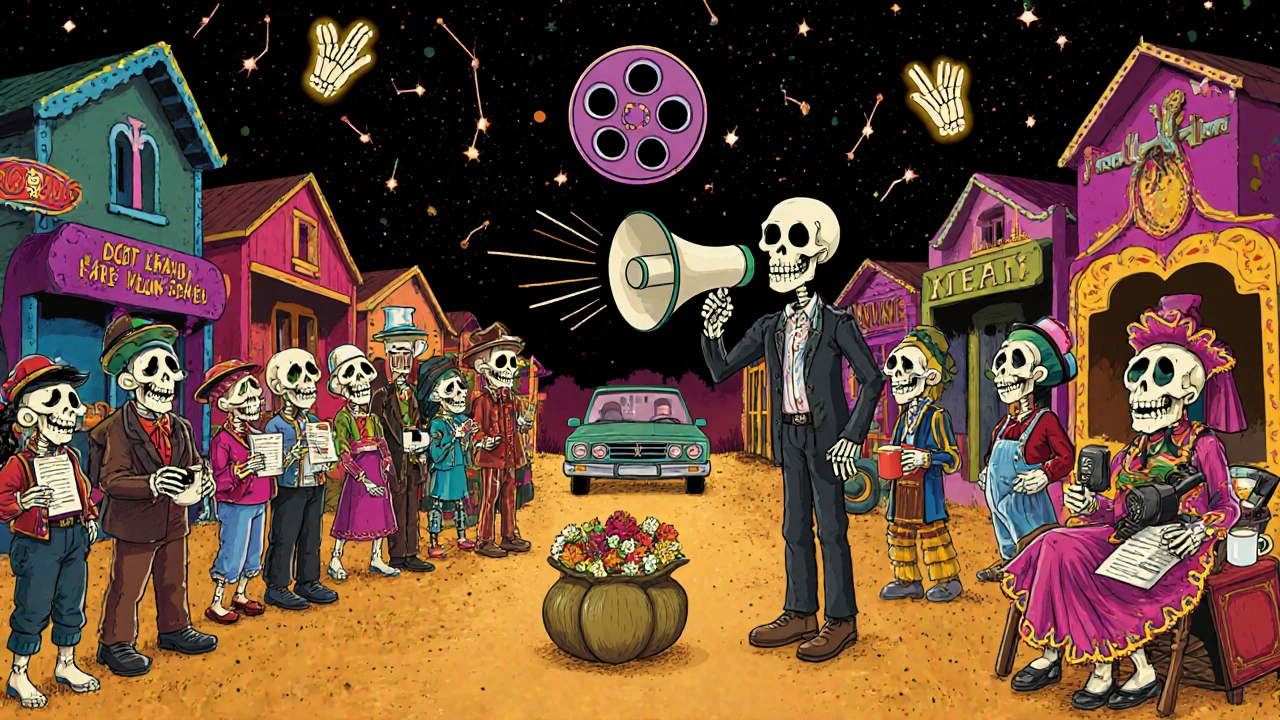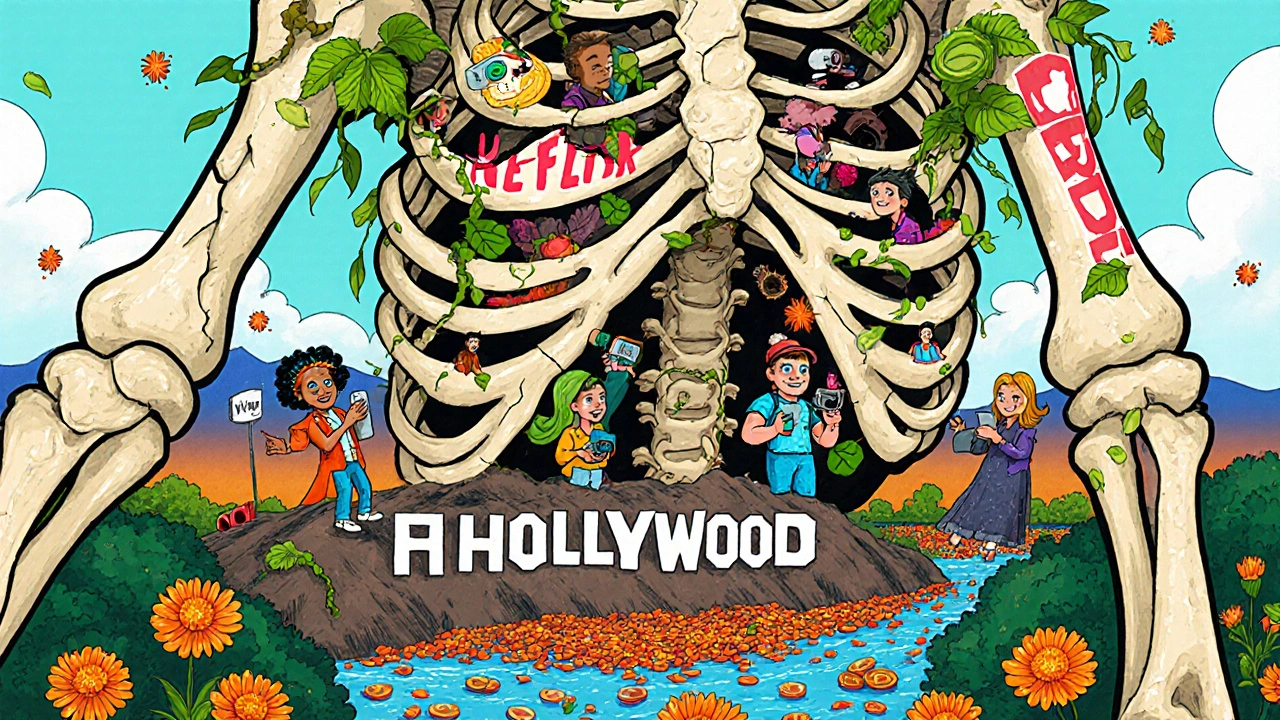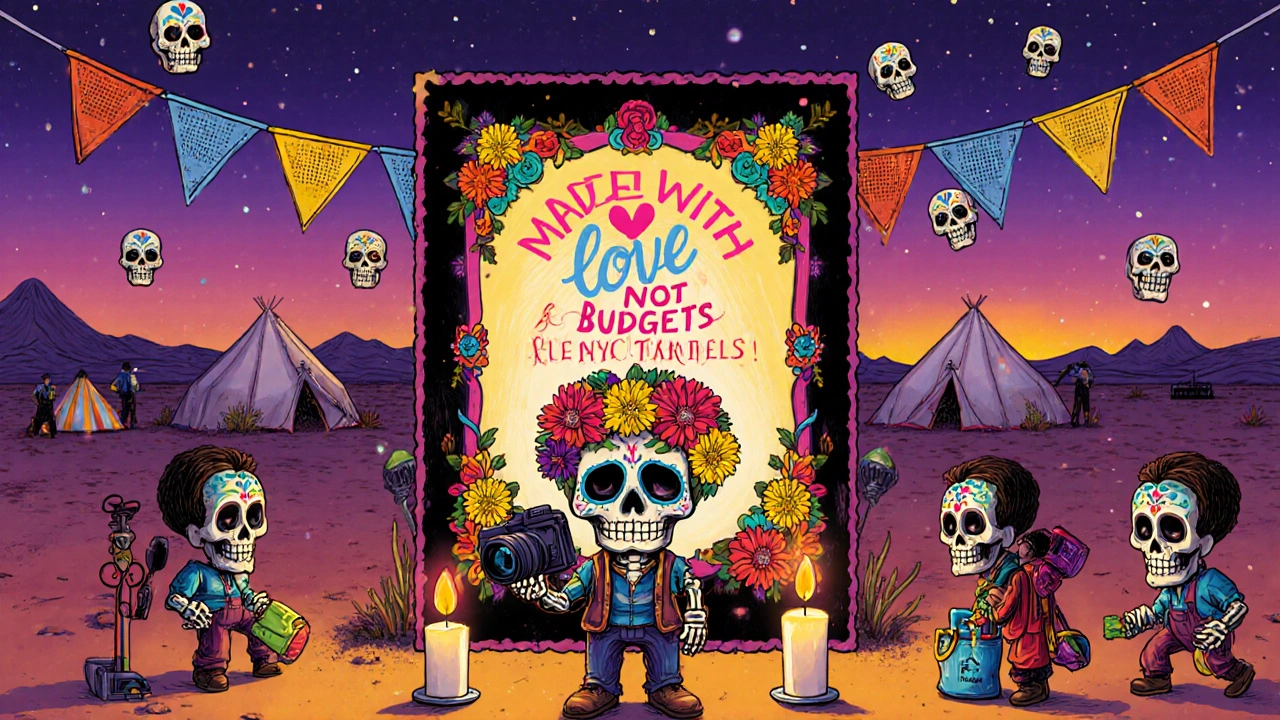Most people think indie films are just passion projects made in garages with a camera and a dream. But that’s not the whole story. Behind every low-budget film is a real economy-one that moves millions of dollars, creates jobs, and shapes what stories get told in mainstream cinema. These aren’t just fringe experiments. They’re the lifeblood of original storytelling.
What Exactly Is an Indie Film?
An independent film isn’t defined by how much it costs, but by who controls it. If a studio like Disney, Warner Bros., or Netflix doesn’t own the rights, fund it, or dictate creative decisions, it’s indie. That means a filmmaker could shoot a feature for $5,000 or $5 million and still be independent-as long as they keep creative control.
The average indie film budget in 2024 was $2.1 million, according to the Sundance Institute’s annual report. That’s less than 5% of what a typical Hollywood blockbuster spends. But here’s the twist: many of those $2 million films make more money at festivals and streaming platforms than some studio releases that cost $80 million.
How Do Small-Budget Films Actually Get Made?
Forget the myth of rich patrons handing out cash. Most indie films are built on sweat, favors, and smart resourcefulness. Crew members work for deferred pay. Actors take roles for scale or nothing at all. Locations are borrowed from friends. Cameras are rented from local shops. A director might shoot a scene in their own backyard because they couldn’t afford a permit.
Take Paranormal Activity-made for $15,000 in 2007. It grossed over $193 million. Or Little Miss Sunshine, shot for $8 million, which earned $100 million and launched careers. These weren’t flukes. They were the result of tight budgets forcing innovation.
Today, filmmakers use crowdfunding platforms like Kickstarter and Seed&Spark to raise money directly from fans. Others partner with local film commissions that offer tax incentives. In New Mexico, you can get up to 35% back on production costs. In Georgia, it’s 30%. Even in Canada, provinces like British Columbia offer 30-40% rebates. These aren’t handouts-they’re economic tools that turn local spending into global returns.
Why Indie Films Are the Training Ground for Hollywood
Think about your favorite director. Chances are, they started with a tiny film. Greta Gerwig made Frances Ha for $120,000. Barry Jenkins shot Medicine for Melancholy for $12,000. Jordan Peele’s Get Out cost $4.5 million. All of them went on to make Oscar-winning, billion-dollar films.
Why? Because indie filmmaking teaches you how to solve problems with nothing. You learn to tell a story with one light, one take, and one actor. You learn to edit on a laptop in your living room. You learn to market a film without a PR team. These aren’t just skills-they’re survival instincts.
Hollywood doesn’t hire directors because they’ve worked on big sets. They hire them because they’ve proven they can make something powerful with almost nothing. That’s why film schools still send students to Sundance-not to network, but to see what’s possible when you’re not held back by budgets.

The Hidden Economic Engine
Indie films aren’t just about art. They’re about jobs. Every small film hires local crew: grips, sound techs, makeup artists, drivers, caterers. In rural towns, a single indie shoot can inject $50,000-$200,000 into the local economy in just two weeks.
Take a film shot in rural New Zealand. The production rented equipment from a local shop, hired 12 crew members from the town, paid for 15 hotel rooms, bought groceries from the supermarket, and ate at three restaurants. That’s not just a film-it’s a mini economic stimulus package.
And it scales. The Independent Film & Television Alliance estimates that indie films support over 100,000 jobs in the U.S. alone. That’s more than the entire coal mining industry. And these aren’t temporary gigs. Many crew members build careers around indie work, moving from one project to the next, forming tight-knit crews that work together for years.
How Indie Films Shape What We Watch
Big studios don’t take risks. They make sequels, reboots, and superhero movies because they’re safe bets. But indie films test new ideas. They explore queer narratives, immigrant stories, mental health, and rural poverty-topics studios avoid because they don’t fit the “global appeal” mold.
When Moonlight won Best Picture in 2017, it wasn’t just a win for a film. It was a win for a whole category of stories that had been ignored. That film opened doors for Minari, Everything Everywhere All at Once, and The Worst Person in the World. Each of those films started small, found an audience, and forced studios to rethink what “commercial” means.
Streaming platforms noticed. Netflix, Hulu, and Amazon now spend billions acquiring indie films-not because they’re cheap, but because they’re culturally relevant. They bring in niche audiences that big blockbusters can’t touch. And those audiences? They’re loyal. They watch. They talk. They create memes. They turn quiet films into cultural moments.

The Real Cost of Ignoring Indie Films
If indie films disappeared tomorrow, what would we lose?
- Original voices. No more Boyhood, no more Lost in Translation, no more Whiplash.
- Diversity in storytelling. Most mainstream films still center white, male, heterosexual narratives. Indie films break that mold.
- Opportunities for underrepresented creators. Women, people of color, LGBTQ+ filmmakers, and disabled artists get their first chances on indie sets.
- Innovation in film technique. Handheld cameras, natural lighting, non-linear editing-all popularized by indie filmmakers before going mainstream.
And here’s the brutal truth: if indie films die, Hollywood dies too. Because without indie films, there’s no pipeline for new talent. No fresh ideas. No risk-takers. Just recycled formulas.
How You Can Support Indie Films
You don’t need to be a millionaire to help. Here’s what actually works:
- Watch indie films on streaming platforms. Don’t wait for them to pop up on Netflix-search for them. Use keywords like “indie drama” or “low-budget film.”
- Buy tickets to local screenings. Community theaters and film festivals rely on attendance. One extra ticket can keep a festival alive.
- Leave reviews. A five-star rating on Letterboxd or IMDb helps a film get recommended to others.
- Follow filmmakers on social media. Share their work. Comment. Engage. Visibility matters more than you think.
- Donate to crowdfunding campaigns. Even $10 helps cover editing software or travel costs for festival submissions.
Indie films don’t need your money-they need your attention.
What’s Next for Indie Film?
The future isn’t about bigger budgets. It’s about smarter distribution. AI tools are now helping indie filmmakers edit faster, color grade scenes, and even generate rough soundtracks. Apps like Runway ML and Descript are cutting post-production time in half.
At the same time, global audiences are hungry for authentic stories. TikTok and YouTube have shown that viewers will watch a 10-minute film made on a phone if it feels real. That’s the new frontier: micro-indie films under $1,000 that go viral.
And in places like Nigeria, India, and Mexico, local indie scenes are exploding. Nollywood produces over 2,000 films a year-more than Hollywood. These aren’t imports. They’re homegrown stories, told in local languages, with local talent, reaching local audiences first.
Indie film isn’t dying. It’s evolving. And it’s more powerful now than ever.
Are indie films profitable?
Yes-many are. While most indie films don’t make millions, a significant number break even or turn a profit through streaming rights, festival sales, and international distribution. Films like Paranormal Activity and Get Out made hundreds of times their budget. Even modestly successful indie films can earn $500,000-$2 million after accounting for all revenue streams.
Can anyone make an indie film?
Absolutely. All you need is a story, a camera (even a smartphone), and determination. Many successful indie filmmakers started with no experience. What matters is persistence, not equipment. Film schools aren’t required. Grants, crowdfunding, and local partnerships can cover costs. The barrier to entry is lower than ever.
Do indie films get distributed?
Yes, but it’s not automatic. Distribution deals often come after festival success-like Sundance, Toronto, or Cannes. Sales agents represent indie films to streaming services, VOD platforms, and international buyers. Some filmmakers self-distribute through platforms like Vimeo On Demand or Seed&Spark. It takes time, but distribution is possible even without studio backing.
Why do studios buy indie films?
Studios buy indie films because they’re low-risk, high-reward. A $1 million film that wins awards or goes viral can generate $10-$50 million in revenue. They also acquire indie films to fill content gaps on streaming platforms. Indie films attract niche audiences that big blockbusters can’t reach, helping platforms retain subscribers.
How do indie films compete with big studio marketing?
They don’t compete-they bypass. Indie films rely on word-of-mouth, social media, film festivals, and targeted online ads. A well-placed review in a major publication or a viral clip on TikTok can do more than a $10 million ad campaign. Authenticity sells. Audiences trust real stories more than polished commercials.


